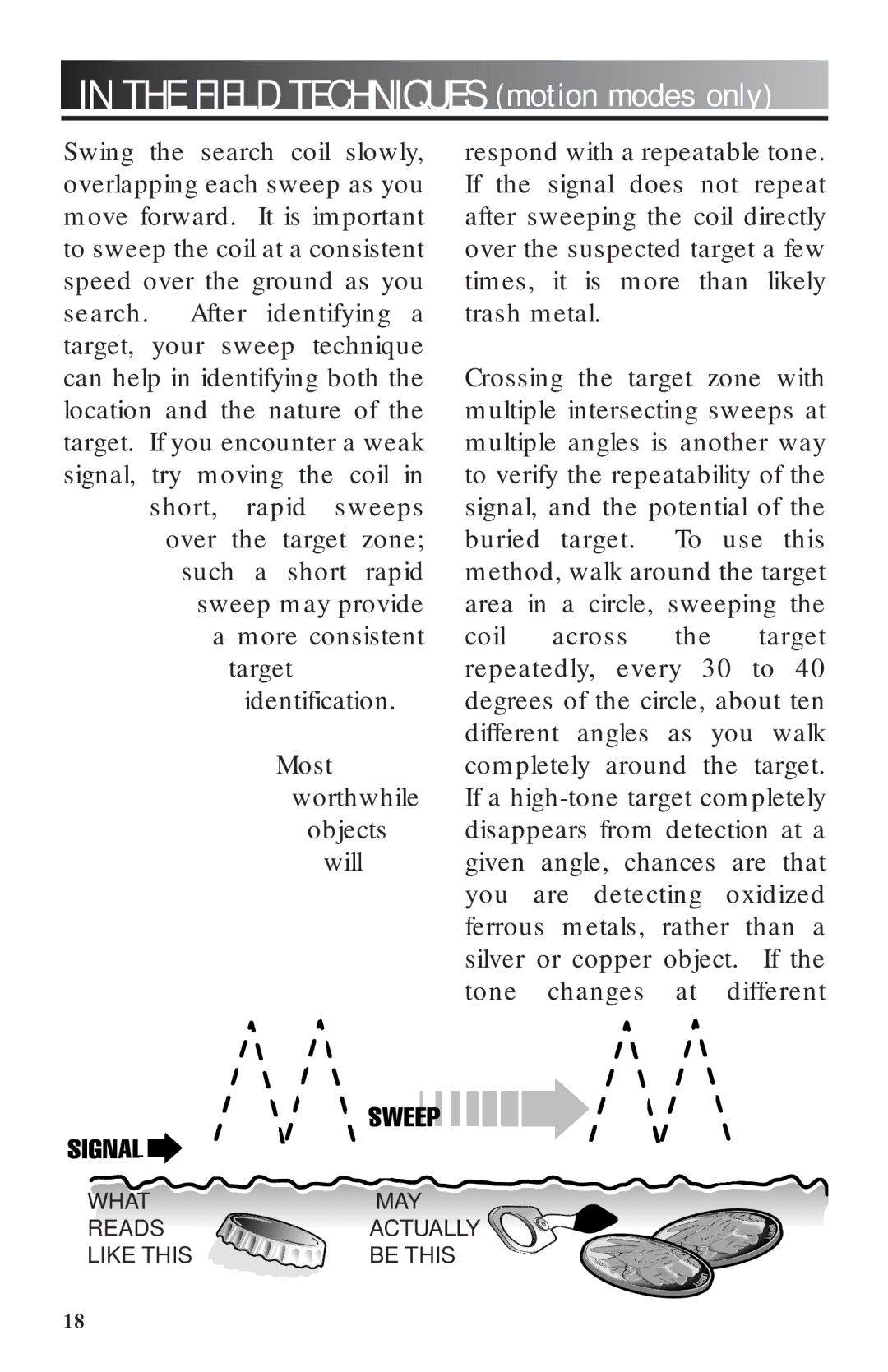

 IN
IN


 THE
THE
 FIELD
FIELD

 TECHNIQUES
TECHNIQUES

 (motion
(motion
 modes
modes

 only)
only)






Swing the search coil slowly, overlapping each sweep as you move forward. It is important to sweep the coil at a consistent speed over the ground as you search. After identifying a target, your sweep technique can help in identifying both the location and the nature of the target. If you encounter a weak signal, try moving the coil in
short, rapid sweeps over the target zone; such a short rapid sweep may provide a more consistent
target identification.
Most worthwhile
objects will
respond with a repeatable tone. If the signal does not repeat after sweeping the coil directly over the suspected target a few times, it is more than likely trash metal.
Crossing the target zone with multiple intersecting sweeps at multiple angles is another way to verify the repeatability of the signal, and the potential of the buried target. To use this method, walk around the target area in a circle, sweeping the coil across the target repeatedly, every 30 to 40 degrees of the circle, about ten different angles as you walk completely around the target. If a
WHAT | …MAY |
READS | ACTUALLY |
LIKE THIS | BE THIS |
18
